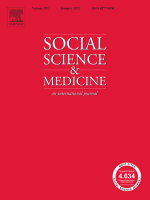The conspiracy of Covid-19 and 5G

January 2022. Our Centre’s co-director Elizabeth Farries contributed to the publication of this article alongside Eoin Flaherty, Assistant Professor of Sociology in Maynooth University and Tristan Sturm, Associate Professor of Human Geopraphy in Queen’s University Belfast
In a context of mistrust in public health institutions and practices, anti-COVID/vaccination protests and the storming of Congress have illustrated that conspiracy theories are a real and imminent threat to health and wellbeing, democracy, and public understanding of science. One manifestation of this is the suggested correlation of COVID-19 with 5G mobile technology.
Throughout 2020, this alleged correlation was promoted and distributed widely on social media, often in the form of maps overlaying the distribution of COVID-19 cases with the installation of 5G towers. These conspiracy theories are not fringe phenomena, and they form part of a growing repertoire for conspiracist activist groups with capacities for organised violence.
In this paper, we outline how spatial data have been co-opted, and spatial correlations asserted by conspiracy theorists. We consider the basis of their claims of causal association with reference to three key areas of geographical explanation:
(1) how social properties are constituted and how they exert complex causal forces,
(2) the pitfalls of correlation with spatial and ecological data, and
(3) the challenges of specifying and interpreting causal effects with spatial data.
For each, we consider the unique theoretical and technical challenges involved in specifying meaningful correlation, and how their discarding facilitates conspiracist attribution. In doing so, we offer a basis both to interrogate conspiracists’ uses and interpretation of data from elementary principles and offer some cautionary notes on the potential for their future misuse in an age of data democratisation.
Finally, this paper contributes to work on the basis of conspiracy theories in general, by asserting how – absent an appreciation of these key methodological principles – spatial health data may be especially prone to co-option by conspiracist groups.
You can see the full article here: https://www.sciencedirect.com/science/article/pii/S0277953621008789